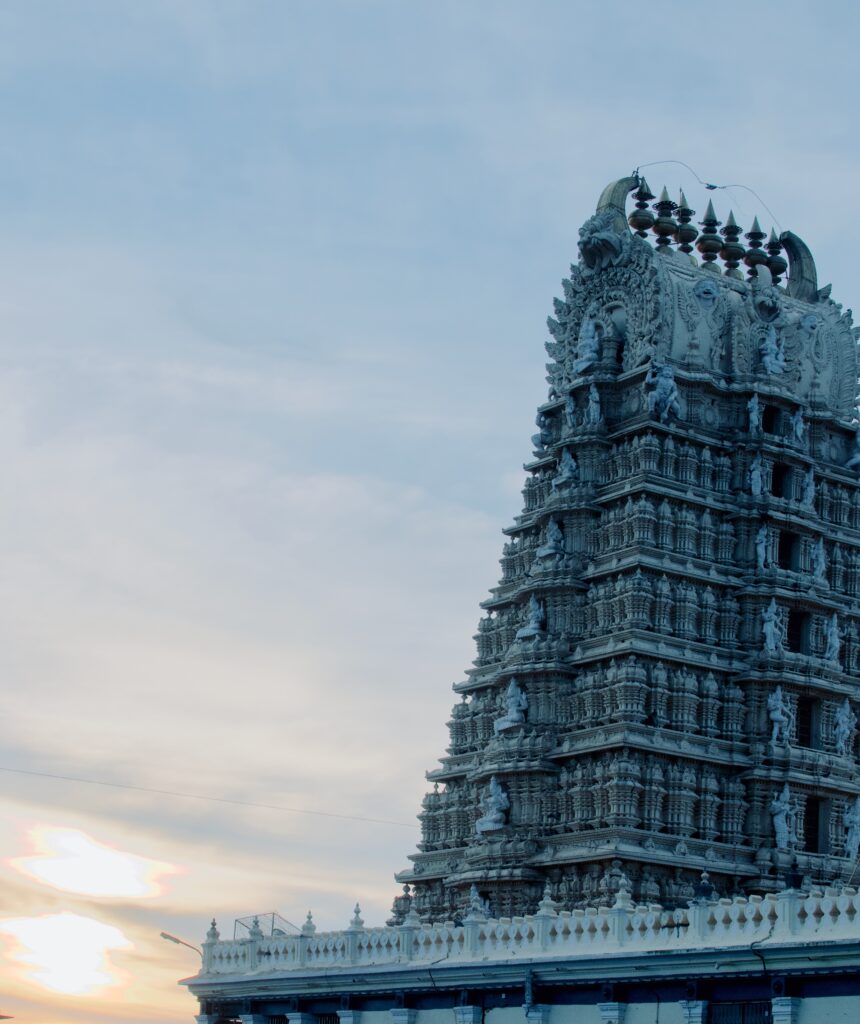India, a land of heritage, diverse culture and spirituality, has long been a favorite destination for travelers seeking spiritual experiences and cultural immersion. In the recent years, there has been a remarkable transformation in India’s tourism landscape, with pilgrimage tourism emerging as a dominant trend.
Surprisingly, these sacred paths are attracting more travelers than the pristine beaches of Goa, which have been regarded as the epitome of recreational travel for many. Let’s delve into the reasons behind this surge in spiritual tourism and explore some of the government’s initiatives that have contributed to its growth.
The Rise of Spiritual Tourism
Spiritual tourism, a form of travel that revolves around the religious or spiritual pursuits, has been on the rise globally. In India, this trend has gained immense popularity, with more than 60 per cent of country’s tourism now associated with religious and spiritual destinations.

People are increasingly seeking ways to connect with their inner selves and find solace in the fast-paced world we live in. Spiritual tourism offers an escape from the daily grind and provides an opportunity to reconnect with something larger than ourselves.
Another factor that is contributing to the boom in spiritual tourism is the growing popularity of wellness tourism. Many of these pilgrimage destinations now offer activities such as yoga, meditation, and Ayurvedic treatments, which not only provide a spiritual experience but also promote physical and mental well-being. The blend of spiritual and wellness offerings has attracted travelers from all walks of life.

Social media has also played a pivotal role in popularizing spiritual tourism. With travelers sharing their transformative experiences on various platforms, others are inspired to seek similar journeys. The captivating stories and picturesque images shared on social media platforms have undoubtedly contributed to the rise of this trend.
Data and Insights of Pilgrimage Tourism
Recent data reveals the astounding growth of pilgrimage tourism in India. Varanasi, the spiritual hub, witnessed a staggering 7.16 crore (71.6 million) tourists in 2022, which is eight times more than the number of visitors to Goa’s beaches (85 lakh, i.e., 8.5 million). Other destinations like Mathura and Ayodhya have also drawn pilgrims from across the country and around the world, with visitor numbers reaching 6 crore and 2.6 crore respectively. This clearly illustrates that pilgrimage paths are now surpassing Goa’s beaches in popularity, challenging the long-standing notion of Goa as the top recreational choice for travelers.
In addition to the burgeoning popularity of spiritual tourism in India, this trend is part of a larger global movement. The global market for spiritual tourism has been witnessing significant growth, with estimated worth reaching US$15.07 billion in 2023, up from US$13.70 billion in 2022. This impressive growth is projected to continue, with experts forecasting a Compound Annual Growth Rate (CAGR) of 10.5% from 2023 to 2033.
The surge in spiritual tourism can be attributed to the increasing number of people seeking meaningful and transformative experiences during their travels. As the world becomes more interconnected, individuals are searching for ways to connect with their inner selves and explore diverse cultures and spiritual practices.
Government Initiatives for Protecting and Promoting India’s Spiritual Heritage
The Indian government has recognized the immense potential of pilgrimage tourism and has taken significant steps to develop and revamp sacred sites. One such initiative is the ‘National Mission on Pilgrimage Rejuvenation and Spiritual, Heritage Augmentation Drive (PRASHAD),’ which aims to holistically develop 41 pilgrimage destinations across India.
Under PRASHAD, various pilgrimage sites like Dwarka, Somnath, Varanasi, Mathura, Badrinath, Kedarnath, Gangotri, and Yamunotri have got special attention. World-class infrastructure has been developed to enhance the accessibility and overall tourist experience, including connectivity, accommodation facilities, and local arts and crafts promotion.

The government has also taken significant strides to protect and preserve India’s rich cultural heritage. The revival of temples like Kashi Vishwanath, Mahakaleshwar, Raghunath, and Sheetalnath, along with the ambitious reconstruction of the Ram Janmabhoomi temple complex in Ayodhya, showcases the commitment towards preserving India’s cultural and spiritual identity.
Additionally, the ‘Swadesh Darshan’ scheme has been instrumental in developing 15 tourism circuits, highlighting the country’s spiritual, historical, and natural treasures. Moreover, the blend of spiritual experiences with wellness offerings, like yoga, meditation, and Ayurvedic treatments, makes these destinations even more appealing to modern travelers seeking holistic well-being.
Thriving Opportunities in Travel & Hospitality
As the global market for spiritual tourism continues to expand, it has become a flourishing sector with immense potential for the travel and hospitality industry. Businesses and entrepreneurs worldwide are beginning to recognize the lucrative opportunities presented by catering to the growing niche of spiritual travelers. This emerging trend has led to the development of specialized tour packages, accommodation options, and wellness facilities that cater to the unique needs and preferences of those seeking transformative and soul-enriching journeys.
The rising interest in spiritual tourism has encouraged travel companies and tour operators to curate thoughtful itineraries that focus on spiritual experiences and cultural immersion. These specialized tour packages offer pilgrims and spiritual seekers the chance to explore revered sacred sites, participate in traditional ceremonies, and engage with local spiritual practices. The demand for authentic and meaningful experiences has paved the way for travel agencies to collaborate with spiritual leaders and local communities, ensuring that travelers have an enriching and genuine encounter with spirituality.
Moreover, the rise of spiritual tourism has led to the development of sustainable and responsible travel practices. Businesses and entrepreneurs in the travel industry are becoming more conscious of the environmental and cultural impact of tourism. Initiatives are being taken to preserve sacred sites, protect local traditions, and promote responsible tourism practices that benefit both the travelers and the communities they visit.
In conclusion, spiritual tourism is not only reshaping India’s tourism landscape but is also emerging as a prominent global trend. With its captivating spiritual experiences and cultural richness, India’s pilgrim paths are leading the way, drawing travelers from around the world seeking transformative journeys of the soul.








